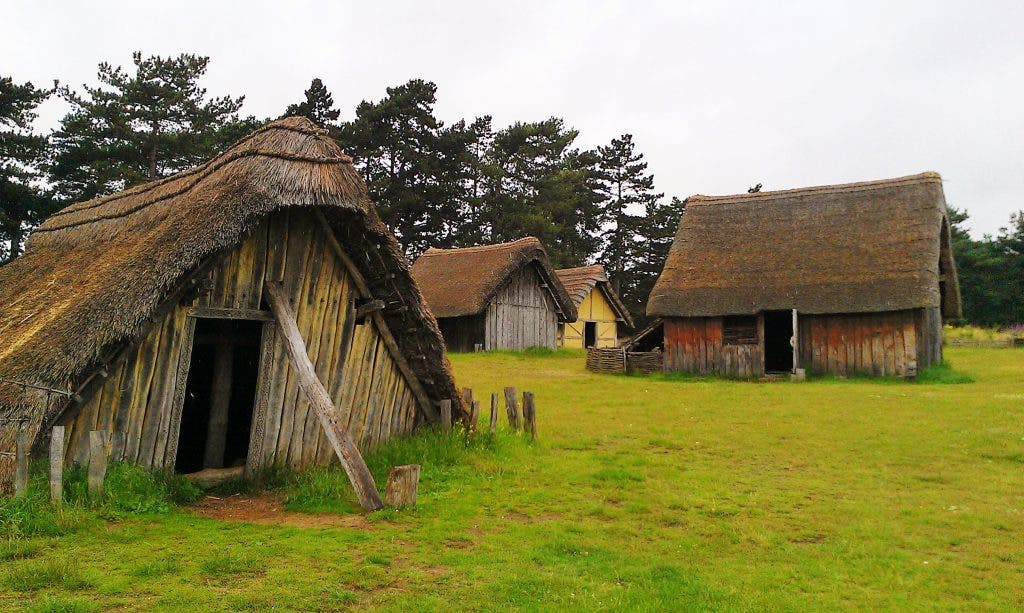A new study shows that the Anglo-Saxons were a melting pot of people of different ancestries and heritage. They were both natives and immigrants and showed a striking genetic diversity. The authors of a new study analyzing this diversity note that “the Anglo-Saxon kingdoms of early Medieval Britain were strikingly similar to contemporary Britain — full of people of different ancestries sharing a common language and culture.”

Who were the Anglo Saxons?
In the 5th to 7th centuries, groups of Germanic peoples sailed from mainland Europe to Britain. Aided by the power gap of the falling Roman Empire, they managed to settle down with relative ease and integrate with the local population.
Historical texts describe this as an invasion, with the invaders replacing the locals, but archaeological evidence is increasingly showing that many early Anglo-Saxons were locals, coexisting with the immigrants.
In a new study, a team of researchers (Professor Dobney at the University of Sydney together with Dr. Kimberly Plomp and Professor Mark Collard at Simon Fraser University in Vancouver) used 3D shape analysis to compare the skull anatomy of 236 individuals from Early and Middle Anglo-Saxon times. They found that among Early Anglo-Saxon individuals, 25-33% were of local ancestry, while among Middle Anglo-Saxons, 50-70% were local.
This rate of change is possibly indicative of a change in the rate of migration, and it also suggests that genetically, Anglo-Saxons weren’t a homogeneous group — but rather a diverse bunch.

“Previous studies by paleoanthropologists have shown that the base of the human skull holds a shape signature that can be used to track relationships among human populations in a similar way to ancient DNA,” Dr. Plomp said. “Based on this, we collected 3D data from suitably dated skeletal collections from Britain and Denmark, and then analyzed the data to estimate the ancestry of the Anglo-Saxon individuals in the sample.”
“These findings tell us that being Anglo-Saxon was more likely a matter of language and culture, not genetics,” Professor Collard said.
The fact that the findings contradict historic texts, which suggest that hordes of European invaders replaced the existing Romano-British inhabitants is intriguing, but biological evidence is increasingly showing that Europeans who settled in Britain were more immigrants and less murdering invaders.
“The reason for the ongoing confusion is the apparent contradiction between early historical texts (written sometime after the events that imply that the newcomers were both numerous and replaced the Romano-British population) and some recent biomolecular markers directly recovered from Anglo-Saxon skeletons that appears to suggest numbers of immigrants were few,” said Professor Dobney.
“Our new data sits at the interface of this debate and implies that early Anglo-Saxon society was a mix of both newcomers and immigrants and, instead of wholesale population replacement, a process of acculturation resulted in Anglo-Saxon language and culture being adopted wholesale by the local population.”
As is the case with multiple areas in Europe, the transition was also murkied by the end of the Roman period in Britain. It’s a testament to how impactful the Roman occupation was that after it ended, it left power voids all over Europe.
“It could be [that] this new cultural package was attractive, filling a vacuum left at the end of the Roman occupation of Britain. Whatever the reason, it lit the fuse for the English nation we have today — still comprised of people of different origins who share the same language,” Professor Dobney said.
The story of how Anglo-Saxons came to be in Britain is still an open one, but for now at least, according to Professor Dobney, the results suggest that “the Anglo-Saxon kingdoms of early Medieval Britain were strikingly similar to contemporary Britain–full of people of different ancestries sharing a common language and culture.”
The study has been published in PLOS ONE.


